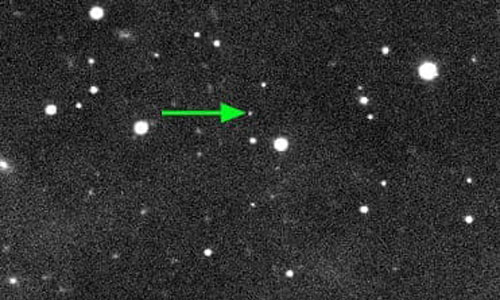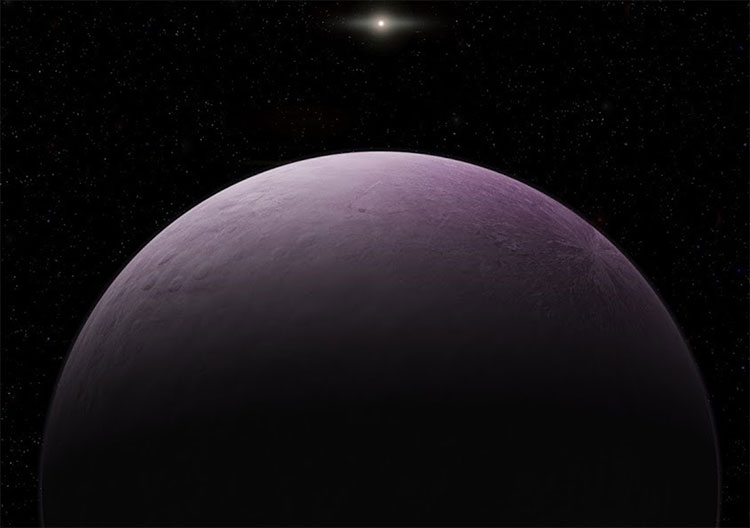Discover the most distant object in the Solar System
Celestial body 2018 VG18 is pale pink, has a diameter of about 500km and takes more than 1,000 years to complete an orbit around the Sun.
Astronomers announced the discovery of the farthest object in the solar system thanks to a telescope located in Mauna Kea, Hawaii, on December 17, according to Mashable. The object has an official name of 2018 VG18 and is nicknamed "Farout".

Celestial body 2018 VG18 in a telescope photo.(Photo: Scott S Sheppard / David Tholen).
2018 VG18 is 120 times farther away from the Sun (the average distance between the Earth and the Sun is nearly 150 million km). It is about 35.4 billion kilometers further than Eris, the second distant object in the system. Eris is a dwarf planet about the size of Pluto.
"Now all we know about 2018 VG18 is the distance from the Sun, the estimated diameter and color. Because it's so far, it completes an orbit around the Sun very slowly, potentially losing to more than 1,000 years, " said David Tholen, an astronomer at the University of Hawaii, a member of the research team. Tholen and his colleagues identified, 2018 VG18 pale pink, about 500km in diameter and can be spherical.

Pink celestial illustration 2018 VG18.(Photo: Roberto Molar Candanosa).
The discovery of 2018 VG18 is not accidental. Scientists have long been searching for similar objects in the solar system, including the X planet, or the ninth planet. This is said to be a super-Earth - a planet with a mass greater than Earth. but smaller than Neptune. The gravitational pull of this planet most likely affected the celestial bodies far away from the solar system.
"There may be another object, about the size of a planet, that is affecting their trajectory," Elisabeth Adams, a scientist who studies planetary dwarfs and exoplanets at the Planetary Science Institute, identify. Experts say that many of the objects in this group are formed quite close to the Sun billions of years ago, because that's where most of the matter in the system exists.
Although it is unclear what caused the 2018 VG18 to be pushed so far, the discovery of this celestial body is still a remarkable scientific event."It's amazing, the new discovery makes the Solar System much wider , " Adams commented. He said that there are still many distant celestial bodies that are not known to humans.
- Discover the oldest solar system outside the solar system
- Discover the most distant galaxy group
- Discover the solar system 7 planets
- For the first time, identify an object from outside the Solar System
- The distance from the Earth to the celestial bodies in the solar system
- Discovering the undiscovered '10th Planet' in the Solar System?
- Capture the most distant object in the universe
- Comets can exist outside the solar system
- Discover new planets outside the solar system
- Pioneer 10 - the mission of the pioneer
- The messenger of the distant universe has come to Earth?
- Discover the nearby neighborhood of the solar system
 Van Allen's belt and evidence that the Apollo 11 mission to the Moon was myth
Van Allen's belt and evidence that the Apollo 11 mission to the Moon was myth The levels of civilization in the universe (Kardashev scale)
The levels of civilization in the universe (Kardashev scale) Today Mars, the sun and the Earth are aligned
Today Mars, the sun and the Earth are aligned The Amazon owner announced a secret plan to build a space base for thousands of people
The Amazon owner announced a secret plan to build a space base for thousands of people